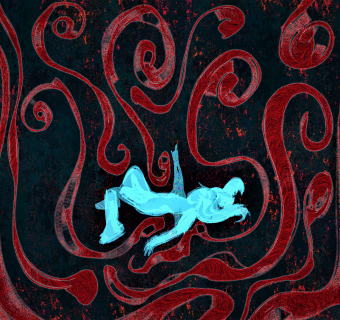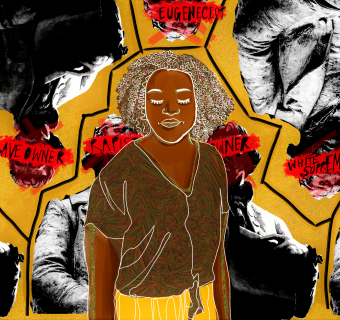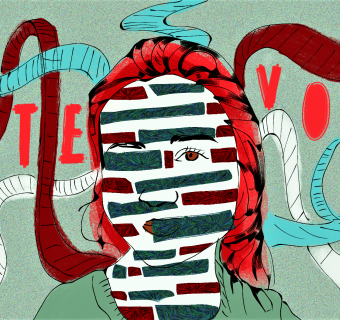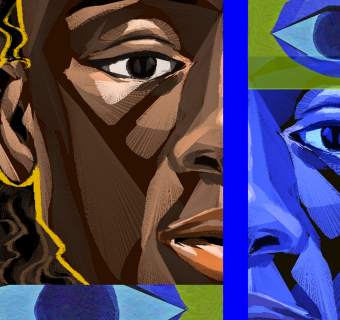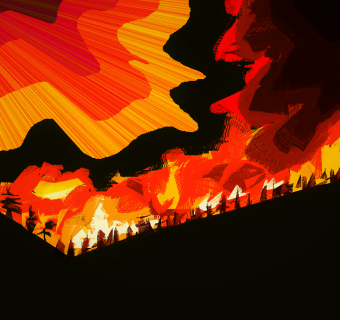
Please describe your involvement with the Women’s Center and Iris when you were a student.
I don’t know where the Women’s Center is now, but when I was at UVA it was in an old house near campus. I used to hang out there—it had a very inviting and comfortable lounge. I’d go there often because it felt safe. The whole building seemed to generate warmth and hospitality. The thing I remember most about those days is that the University had given the Dalia Lama an office in the same building (I think Buddhist Studies might have been there too). He was living in exile and spent a year, I think, in Charlottesville, in the late 1970’s. So, often, he and I would be the only people in the room. We’d sit there smiling and nodding heads at each other. He was radiant. I didn’t realize at the time what a privilege it was to be near him. And how generous and open it was of the Women’s Center to share their space with him. Iris started while I was there, and because I was a student and friend of Sharon Davie’s I was peripherally involved. Some of my first poems were published there. I had no idea it would have lasted so long, and become the nationally-recognized journal it is now.
How do you remember the status of both the Women’s Center and Iris at this time?
The Women’s Center had not much status in those years. UVA was an extremely patriarchal space at that time and I think most people, except for a small group of driven and delighted women, ignored or dismissed the Center and Iris. It is really so great to know that they are both thriving now.
What was it like being a female at UVA when female enrollment was still relatively new for the university? Additionally, when were you a student and what were your experiences in the creative writing department?
I transferred to UVA from Kalamazoo College in 1976. Kalamazoo was an extremely liberal, socially-conscious place, and I thought all colleges and universities must be that way. So, I was shocked to encounter the kind of sexism I encountered at UVA. Women were still very much second-class citizens, particularly women like me who didn’t look like the typical sorority girl. I wore army boots and vintage clothes, and my hair had a blue streak in it, and I was treated like some kind of monster by some of the old guard in the English Dept. It wasn’t until I won the Wagenheim Scholarship, based on my poems, that I got any respect from those men. And even then, I still felt like an alien. (One day a professor charged into the grad. student lounge and said to me, “Who are you, jack-booted girl?”) Sharon Davie had a very hard time, I think, getting respect from her male colleagues. The women’s literature class I took was taught by a semi-retired professor who had no real interest in or knowledge about women’s literature. My experiences in the creative writing program were vastly different. I studied mostly with Greg Orr who is a very egalitarian person, a wonderful teacher and brilliant poet. I also got to work with Carolyn Forche and Ruth Stone while I was there. All in all I was at UVA for five years—two as an undergraduate, and three in the MFA program, which was fairly new. I received one of the first Henry Hoyns Fellowships, so I felt very much supported by the creative writing faculty.
If you’d like, how would you describe UVA in a haiku?
Blue mountain foothills Spring unfolding itself slow Ghosts of slave women
What is the Sally Hemings Society and how would you describe your time with the organization?
The Sally Hemings Society was me and two friends: Dwight Cossitt and Mary Carter. We formed [it] because at the time no one was talking about her (Jefferson’s slave mistress). We felt her presence needed to be acknowledged publicly, so, after taking a few trips to Monticello and harassing the docents there, we staged our one big gesture, which was to make an enormous paper chain and drape the campus statue of the seated Jefferson with it on Valentine’s Day. In his lap we put a gigantic cardboard heart that read “With Fire and Fetters, Love Sally H.” (“With Fire and Fetters” is a quote from a D’Annunzio poem.) That was probably in ’79 or ’80. The UVA newspaper published a picture of our deed with a caption wondering who had done it. We felt that being a secret society fit in just fine with the UVA ethos (!) We made a few people think about her, on Valentine’s Day, which seemed appropriate. Now her existence is common knowledge, but back then it wasn’t acknowledged at all.
How and why did you start writing?
I got a typewriter when I was thirteen and started typing out the lyrics to my favorite songs (mostly Beatles). Then at one point it occurred to me that I could write my own lyrics—I just didn’t know anything at all about music—so I wrote poems. I wrote poems about dead rock stars, mainly, at first. There was something very private, delightfully secretive about what I was doing then. I was creating myself on those pages—really finding out who I was. The only real poem I’d read when I started writing was “The Love Song of J. Alfred Prufrock,” which my mother had shown me. Later, I read Plath and Sexton and Adrienne Rich and Diane Wakoski, and exploded with desire and the energy to create.
What are your poetic influences? In particular, does feminism largely influence your poetry? Are there any other subjects, obsessions, fears, etc. that you are particularly drawn to write about?
Feminism has always influenced my poetry. All of my poems are feminist, even the ones that don’t seem to be about feminism. It informs everything I do. I’m interested in women’s friendships, in the interior lives of women, in the ways in which we are all somehow two people (at least!) on the inside. One book that had a huge influence on me was Tess Gallagher’s Instructions to the Double, which is where I think I got the theme of doubleness or twinning. Later on I wrote from an eco-feminist perspective. I am, like all poets I think, a little bit obsessed with death, with impermanence, with what to do with a belief in and desire for eternity in the face of death. Now I seem to be writing ekphrastic poems about female performance artists, inspired by my daughter, Marlena, who is one.
Should poetry have an agenda? Why or why not?
Because we are thinking people, with logical minds that need to be subverted and disrupted, we can’t help but have agendas in our poems. Even when we think we don’t, we do. We can’t help it, truly. Where you get into trouble as a poet is when you let your agendas dictate the language of your poem. Poems aren’t essays, or bumper-stickers. Even a poet as agenda-driven as Claudia Rankine crafts her language into poetry—is subtle and sly and wise and succinct as a poet. The woman whose poetry I translate, Argentinean poet Alicia Partnoy, is a very political poet. She was one of the 30,000 people disappeared during the military dictatorship there. But her poems are powerful largely because of their imagery, which complicates and expands the statements she’s making.
What is your favorite poem, or at least one to which you constantly return?
This is not a very feminist answer, but it’s John Keats’ poem “When I have Fears that I May Cease to Be.” I love the last line about love and fame sinking into nothingness. The combination of sheer beauty and absolute annihilation is endlessly interesting to me.
What is the best piece of advice you’ve received? Well, Sharon Davie once told me not to marry the guy I was going to marry. I did, and it was a disaster. Clearly I should have listened to her! But I suppose you mean advice as a writer. It wasn’t so much advice, but I learned from almost all of my teachers what it meant to revere language, and to make writing poetry your primary commitment, day to day.
You have a very impressive record of achievements in the world of creative writing. To list a few, you have authored five volumes of poetry, act as Resident Playwright at Sundance Institute and you currently teach creative writing and women’s writing at Loyola Marymount University. For what would you attribute your successes and what kind of advice would you give current female student?
Of course, being a woman, I don’t value my achievements as much as I should. Still working on that one. J But I attribute those successes to a certain doggedness on my part. I have never given up, even though there have been many, many very discouraging and hopeless-feeling moments. So, don’t give up. If you’re not getting anywhere doing something one way, try another way. Just keep at it. Keep in mind that you are a working artist (or literary critic, or anthropologist, or mathematician); take yourself seriously. I never thought, for example, that I was the kind of person who could get a Ph.D., and yet I did. I never thought I would publish a poem, but I’ve published books of poetry now. There are too many people out there—men and women--who will try to dismiss you or silence you because you are a woman, because you’re cute, or because you’re overweight. Don’t let them. You have work to do.
Read some of Gail's poetry at http://www.poetwronsky.com/

